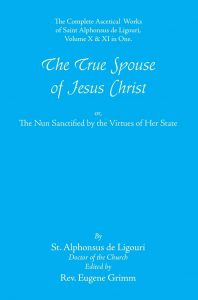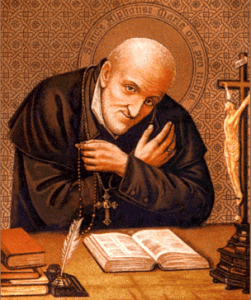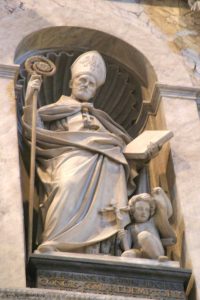The Ideal Book for Every Religious Community Is Back
A review by Trent Beattie
 I keep an old, dilapidated copy of a Catholic literary classic that has helped me tremendously over the years. So impressive was this work that, despite having been written most especially for nuns, I used it in 2010 as one of the sources for a little book of short meditations called Saint Alphonsus Liguori for Every Day.
I keep an old, dilapidated copy of a Catholic literary classic that has helped me tremendously over the years. So impressive was this work that, despite having been written most especially for nuns, I used it in 2010 as one of the sources for a little book of short meditations called Saint Alphonsus Liguori for Every Day.
It was certainly a step in the right direction to get some of the tremendous wisdom of the Redemptorists’ founder out to the general public in a compact format. However, I was disappointed that the entirety of the old source book—The True Spouse of Jesus Christ, also known as The Nun Sanctified—was not currently in print. Despite its title, not only can women religious profit from the book, so can men religious, priests, and single or married laypeople. Because of its far-reaching value, I lamented for a long time how the only copy I knew of was falling apart.
Last year, though, my “book of lamentations” transformed into a “book of consolations” as I learned that Refuge of Sinners Publishing, located in southern Indiana, was currently printing it!
There appears to be no better way for anyone—but especially a religious sister or brother—to delve more deeply into the ascetical teachings of Saint Alphonsus than through The True Spouse of Jesus Christ. This 700-plus page masterpiece contains sound doctrine on, among other topics:
- the desire for perfection;
- the value of obedience to the rule and superiors;
- charity in thoughts, words, and deeds;
- humility of the intellect and of the will;
- the immense benefits of Marian intercession;
- the joy found in penance and resignation to God’s will;
- the necessity of mental prayer;
- patience in sickness and in spiritual desolation,
- and dealing with scruples.
The wisdom in The True Spouse of Jesus Christ comes, not only from Saint Alphonsus directly, but also from other Western saints and Eastern ones, both men and women. From hermits to bishops, hundreds of years’ worth of thoroughly Catholic teaching is being passed along to readers again. Saints Basil, John Chrysostom, Augustine, Catherine of Siena, Teresa of Avila, and Francis de Sales are among the many whose advice rings true for the one who desires to do what is most pleasing to God.
 Saint Alphonsus arranges the vast array of holy advice amid his own. Here is one such example, where the “Most Zealous Doctor of the Church” assures those uncertain about the dispositions of divine providence:
Saint Alphonsus arranges the vast array of holy advice amid his own. Here is one such example, where the “Most Zealous Doctor of the Church” assures those uncertain about the dispositions of divine providence:
It is certain that all [God’s] arrangements are intended for our good. Our Lord said one day to Saint Gertrude: ‘With the same love with which I created man, I ordain for his good all the prosperity or adversity which I send him.’
It is easy to forget that God does not judge us on the outward results of our actions, but on the good will behind them. Saint Alphonsus says the first mark of determining whether our actions are truly done for God is to meet material failure with equanimity of soul. When we have done the right thing but do not obtain the desired result, we should not be upset. He says:
…when your undertaking has not been successful, you are not disturbed, but remain as tranquil as if you had attained your object. This will certainly be the case when you have acted only for God, because when you see that He has not wished to crown your efforts with success, neither will you wish it—for you know that He demands an account, not of the success or failure of your undertaking, but of the purity of your intention.

Purity of intention will determine not only our final destination, but, assuming we cooperate with grace in at least the most basic way, the precise part of Heaven we inhabit. This is one of the great advantages of religious life, according to Saint Alphonsus, who thought that getting to Heaven was incomparably easier to do in a convent or monastery than in the world, saying:
I hold as certain that the greater number of the seraphic thrones vacated by the unhappy associates of Lucifer will be filled by religious. Out of the sixty during the last century [the 1600s] who were enrolled in the catalog of saints or honored with the appellation “Blessed,” all, with the exception of five or six, belonged to the religious orders.
Saint Alphonsus also taught that a foretaste of Heaven is possible in this life…
To be a good religious and to be content are one and the same thing; for the happiness of a religious consists in a constant and perfect union of her will with the adorable will of God. Whoever is not united with Him cannot be happy, for God cannot infuse His consolations into a soul that resists His divine will.
If a religious finds it difficult to actualize resignation to God’s will, possibly the missing link is mental prayer. Merely reciting the divine office or other vocal prayers will not bring all the graces necessary for one’s own circumstances. Familiar conversation with God is foundational, according to Saint Alphonsus:
If you see a tepid religious, say that she does not make mental prayer and you will say the truth. The devil labors hard to make religious lose the love for mediation, and should he conquer them in this, he will gain all. St. Philip Neri used to say, ‘A religious without mental prayer is a religious without reason.’ I add: She is not a religious, but the corpse of a religious.
Even for active orders, mental prayer is a staple, and this can be seen more extensively in The True Spouse of Jesus Christ, which is one reason I would assert that it, too, is also a staple. It does not matter whether a community specializes in education, healthcare, or contemplation, nor does it matter whether the community is Byzantine Catholic, Roman Catholic, or any other rite.
Saint Alphonsus said that “A single bad book will be sufficient to cause the destruction of a monastery.” The opposite is also true: A single good book is sufficient to make a monastery thrive—and The True Spouse of Jesus Christ is probably the one most likely to make this happen. Thanks God for such a blessing being available once again!
Trent Beattie is a freelance writer whose articles have appearing in periodicals such as the National Catholic Register, Catholic Digest, and The Latin Mass. He has authored two books: Fit for Heaven (Dynamic Catholic) and Scruples and Sainthood: Accepting and Overcoming Scrupulosity with the Help of the Saints (Loreto Publications) and edited three others: Saint Alphonsus Liguori for Every Day (Paulist Press), Finding True Happiness (Dynamic Catholic) and Apostolic Athletes (Marian Press).
How to get a copy of The True Spouse of Jesus Christ
Rose Michna, the general manager of Refuge of Sinners Publishing, has put into effect a ten percent discount for any religious community ordering The True Spouse of Jesus Christ—and any other books from Refuge of Sinners for the first time— before May 1, 2020. The code— 10%WELCOME2020 —can be entered in online orders, written in mail orders to Refuge of Sinners Publishing 5271 E Mann Road New Pekin, IN 47165, or mentioned on phone orders at 812-967-253.
